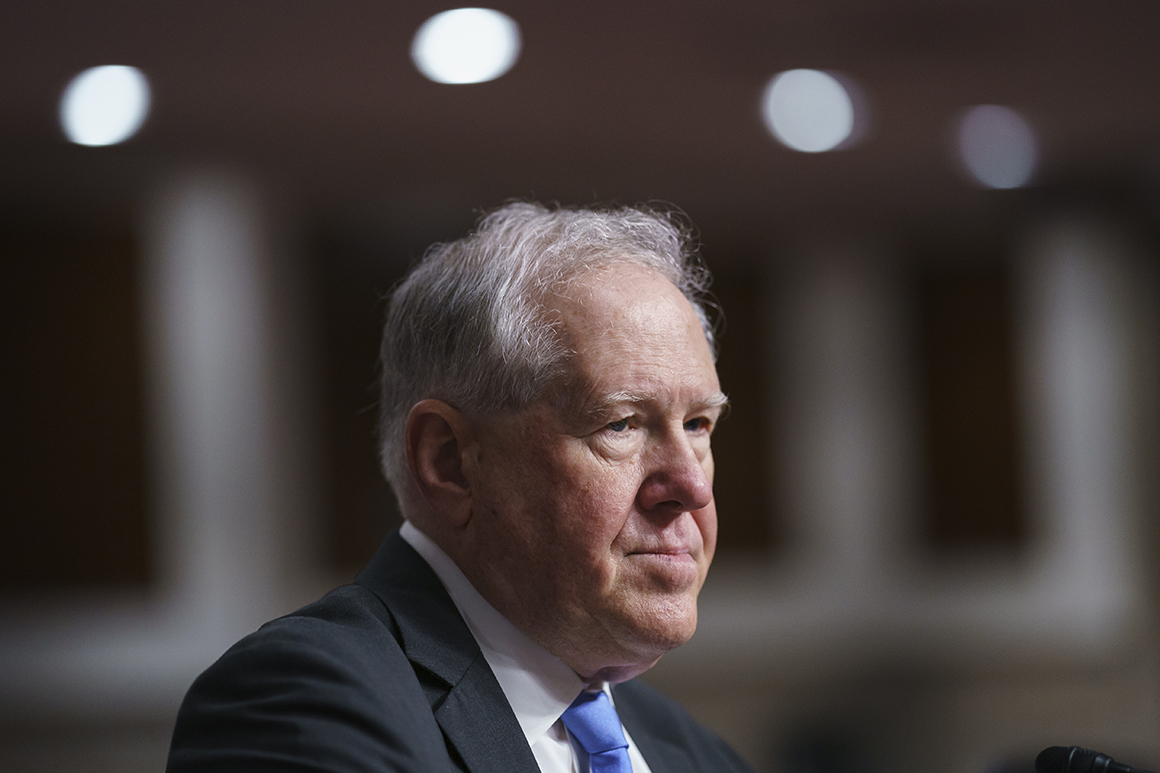
SIMI VALLEY, Calif. — The Air Force will seek funding to develop a pair of classified combat drone programs next year that are designed to operate alongside fighter planes and bombers, Air Force Secretary Frank Kendall told POLITICO.
“I’ve got two that I’m going to have in the ‘23 budget in some form,” Kendall said in an interview at the Reagan National Defense Forum on Saturday. “They’re both unmanned air combat vehicles, unmanned platforms that are designed to work in conjunction with fighter aircraft like [the Next Generation Air Dominance fighter] or F-22 or the F-35. On the other hand they work in conjunction with bombers like the B-21.”
He said the existence of the programs will be disclosed formally in the budget request, which will go to Congress early next year, but the details will be secret.
“These will be acknowledged classified programs,” Kendall explained, “but I am going to try to get them started in ‘23.”
Why it matters: The disclosure is the strongest indication yet that the service is banking on autonomous weapon systems to give it an edge in the increasingly fierce military competition with China.
“Investing in unique and highly capable unmanned aerial vehicles is something people not only expect, but is indicative of the fact that the Air Force is exploiting the technologies out there to give it a decisive technology edge,” said retired Air Force Lt. Gen. Dave Deptula, the former deputy chief of staff for intelligence, surveillance and reconnaissance who now runs the Mitchell Institute for Aerospace Studies, an industry-backed think tank.
What might they be: One possibility is the Air Force may finally be doubling down on a “loyal wingman” program, a drone that relies on artificial intelligence to fly alongside piloted aircraft and take on missions that may be too dangerous for human fighter pilots. The service previously invested in a program to prove out the idea called Skyborg.
The Air Force awarded 24-month demonstration contracts for the Skyborg project in December 2020 to Boeing, General Atomics and Kratos. The next milestone is a flight test of Boeing’s design originally developed for Australia in 2022.
Kendall declined to discuss the programs in detail, but his disclosure that the new classified programs will operate alongside fighters also strongly suggests it is likely the loyal wingman concept, said Richard Aboulafia, vice president for analysis at the Teal Group, an aerospace market analysis firm.
Another clue is that the new unmanned projects will be operating alongside the Next-Generation Air Dominance Program and the B-21 bomber, which are acknowledged classified programs, he said.
The Next-Generation Air Dominance program is expected to be a family of fighter jets and unmanned aircraft. It is set to replace the F-22 stealth fighter in the next decade.
Many in the aerospace and defense industry were surprised the loyal wingman concept was not funded in the Air Force’s fiscal 2022 budget request.
The delay in initiating the programs may be a result of some rethinking about how such an aircraft might be deployed, Aboulafia added, including launching it from another aircraft.
“Maybe they’re considering alternative plans, even air deployment … which would push things down to a smaller air vehicle,” he said.
Another consideration is the U.S. may collaborate with Australia and the UK, which are pursuing their own similar programs. Boeing is spearheading the effort in Australia, while Northrop Grumman has been tapped for the UK project.
A hot ticket: Kendall said the prep work for both new programs is already underway. “I will be doing things to try and get them ready to go,” he said. “We will be able to use study money and some science and technology money to set the stage for that.”
Deptula also expects fierce competition for both programs, given how much the unmanned aircraft industry has expanded and the limited number of new high-dollar Pentagon platforms.
“The number of players has expanded dramatically in the unmanned aerial vehicle space,” he said. “It is not just the big five. There are many, many other corporations out there that can play a role. I am sure the Air Force looked at the capability that exists throughout industry. The UAV industry is one that is expanding, not contracting.”
----------------------------------------
By: Bryan Bender and Lee Hudson
Title: Two new secret combat drones are in the works, Air Force secretary says
Sourced From: www.politico.com/news/2021/12/06/combat-drones-air-force-kendall-523812
Published Date: Mon, 06 Dec 2021 13:24:21 EST






